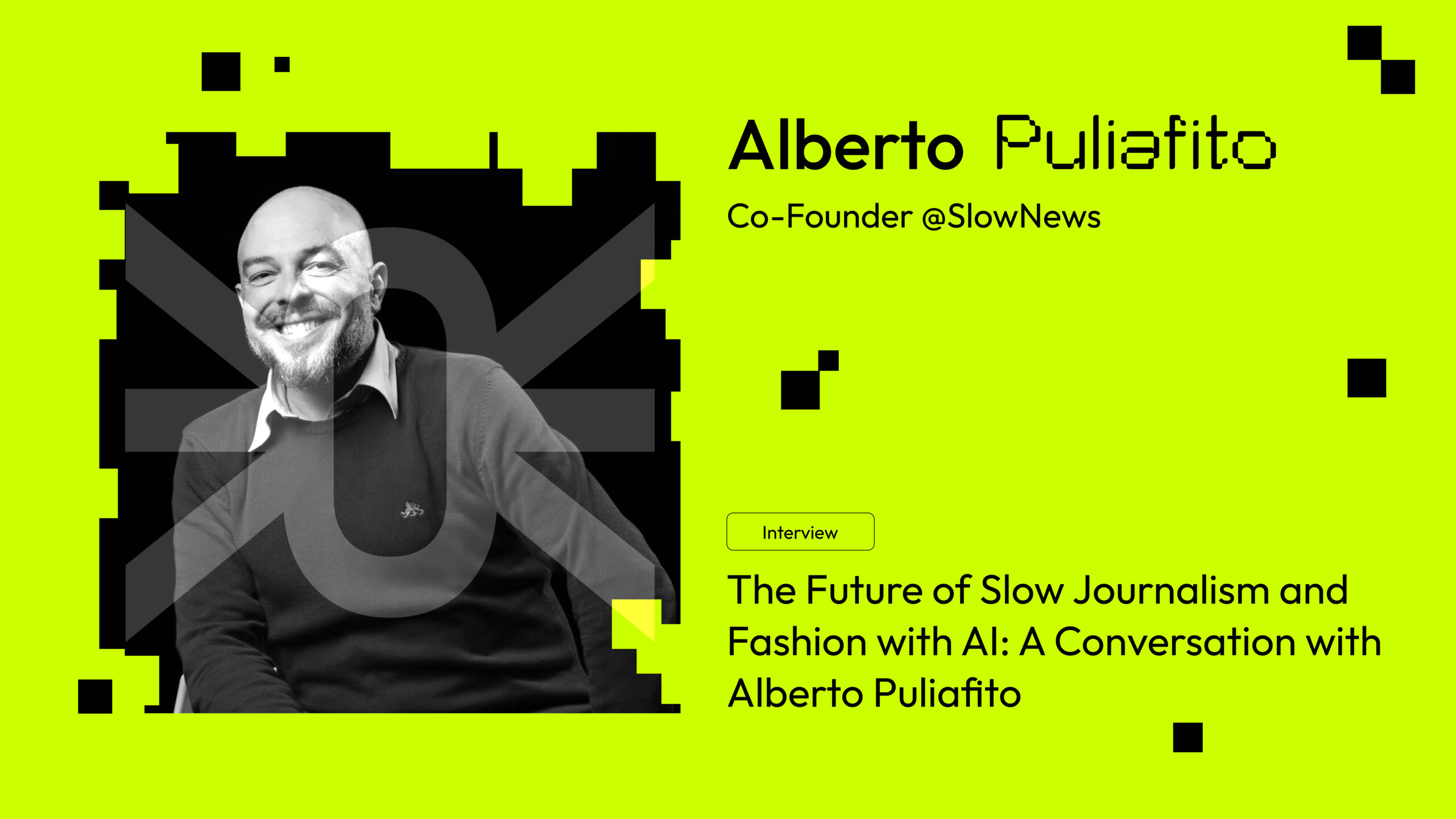The Future of Slow Journalism and Fashion with AI: A Conversation with Alberto Puliafito

We’re back with another interview curated by Francesco Cerisano for Aracne Hub. This time, we sit down with Alberto Puliafito, founder of Slow News, to discuss artificial intelligence, journalism, and fashion.
Alberto shares how AI can become a valuable ally in journalism by automating repetitive tasks and freeing up time for high-quality content. But there’s more: he also explores the potential of AI in fashion, from design to sustainability, while addressing the ethical challenges and risks associated with these technologies.
An interview that weaves together technology, creativity, and ethics, offering essential insights into the future of journalism and fashion.
Could you tell us about yourself and your career journey? What have been the most significant milestones in your work in journalism and media analysis?
My career has been diverse, taking me across various fields, including journalism, production, and digital consulting. Since 2004, I have focused on digital media, founding several ventures, including IK Produzioni and the journalistic start-up Slow News, where I currently serve as director. Additionally, I have trained over 3,500 journalists as a Google News Lab Teaching Fellow for Italy and authored several books, the latest of which delves into generative artificial intelligence. Today, I dedicate myself to media analysis and innovation in journalism, striving to blend technology with a human-centered approach.
You’ve written extensively about artificial intelligence and how it is transforming journalism. Can you share a specific example of how you’ve used generative AI to improve the journalistic process or tackle a specific challenge?
Generative AI has become a valuable ally in my daily work. I use it to save time on news gathering—finding and organizing information—and drafting repetitive texts. It’s also helpful for applying to grants, completing forms more efficiently, and managing correspondence in foreign languages. Essentially, AI frees me from tedious, repetitive tasks, allowing me to focus on what truly matters in journalism.
How does the philosophy of slow journalism align with the use of AI technologies? Do you think AI can help improve the quality of news and combat misinformation?
The philosophy of slow journalism integrates seamlessly with the use of artificial intelligence. If a machine can produce low-value-added content, then perhaps that wasn’t what journalists were meant to do in the first place. Digital journalism should never have been sold as something fast and quantitative. The real value of journalism lies elsewhere, and AI, when used intelligently, can help us focus on quality, leaving machines to handle quantitative production. That said, I am not optimistic about the mainstream media moving in this direction.
In your opinion, how could AI influence the fashion industry? Are there examples of how AI could be used to improve visual content creation or marketing in the fashion world?
That’s an interesting question, as I hadn’t considered it before. Reflecting on what I’ve seen and done with AI, I believe it could become a powerful tool at various stages: from conceptualization to initial design drafts, to experimenting with new materials. It could also be a strong ally in addressing sustainability issues, though it’s worth noting that AI itself has inherent sustainability challenges. Ultimately, AI’s effectiveness depends on the people using it; the technology alone is not a magical solution.
The growing use of AI in journalism and fashion raises various ethical issues, such as data privacy and content authenticity. What are your main ethical concerns regarding AI? How would you suggest addressing these challenges to ensure responsible use of technology?
Ethical challenges related to AI are, in fact, human challenges rather than purely technological ones. My main concerns are more about society and human beings than about machines themselves. I wish these technologies were more transparent, accessible, and allowed visibility into the data used to train them. Unfortunately, there is already a massive gap between those who have the resources to use these technologies and those who don’t. To address these challenges, I believe it’s crucial to focus on data as a common good, ensuring inspectable and accessible machines for everyone. A multidisciplinary approach is also essential, encompassing technology, as well as humanistic, political, and sociological aspects.
What is your vision for the future of AI in journalism and fashion? What advice would you give to young journalists and creatives looking to explore AI in their fields?
I always recommend experimenting, especially if you can do so with children. They open up new horizons and use these machines creatively, without preconceived notions. If you don’t have children, it’s important to approach AI with a beginner’s mindset, play with these technologies, take them apart to understand how they work, and try applying them to practical cases. This advice applies both to those who want to use AI in journalism and to those in the fashion world.


